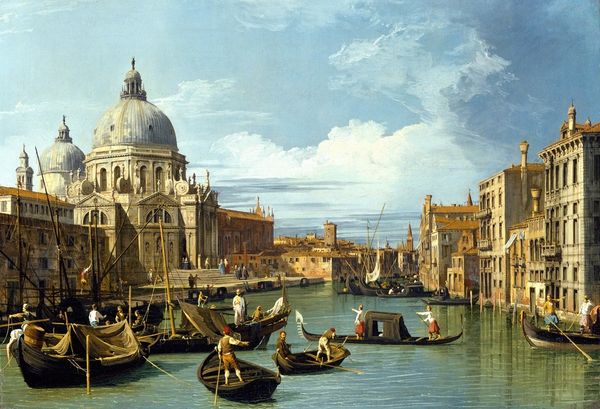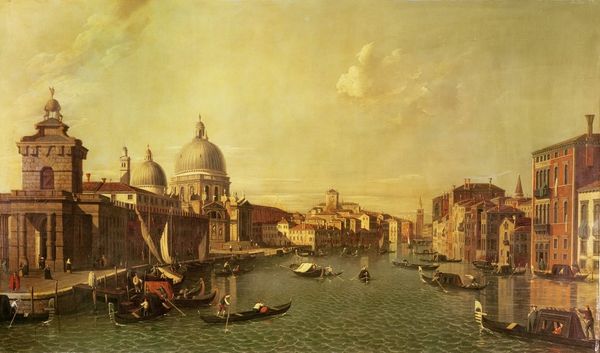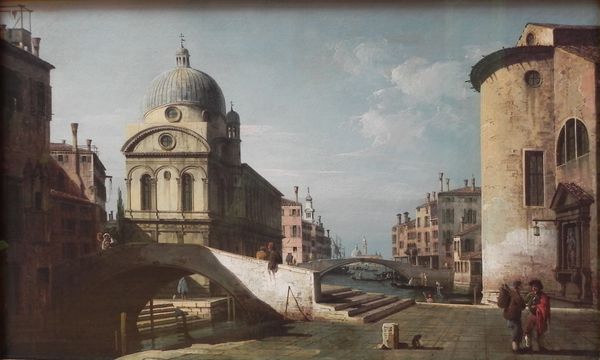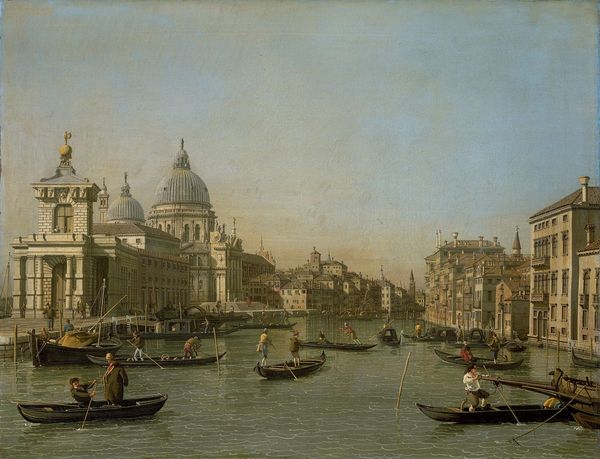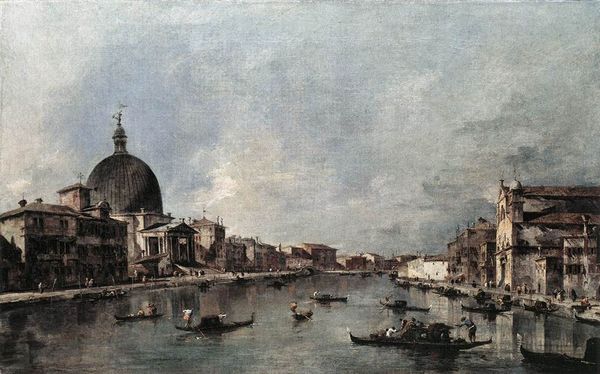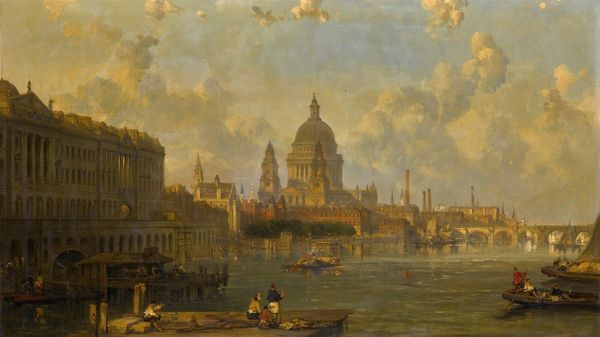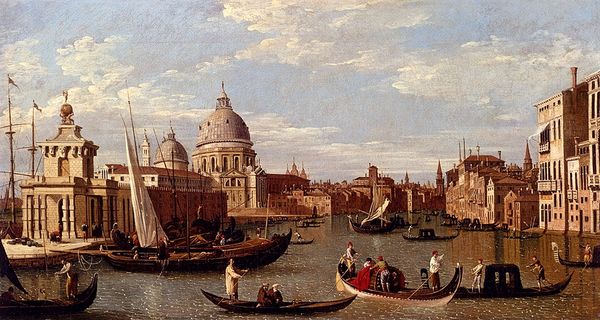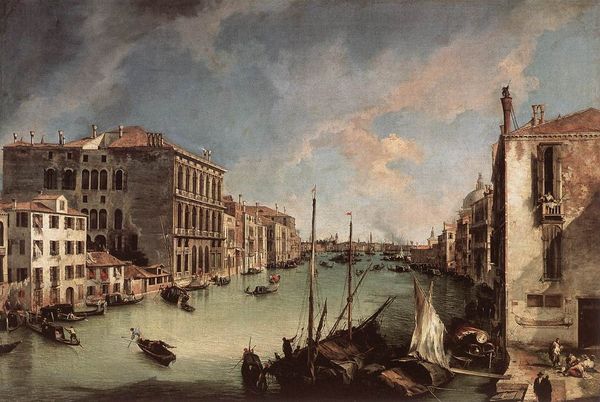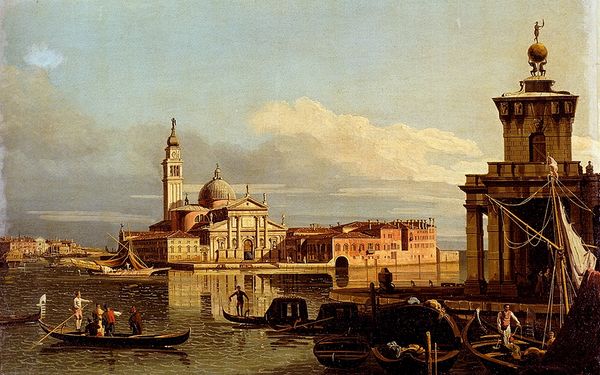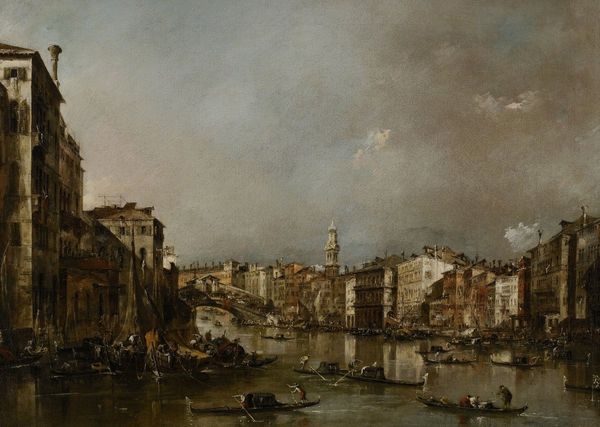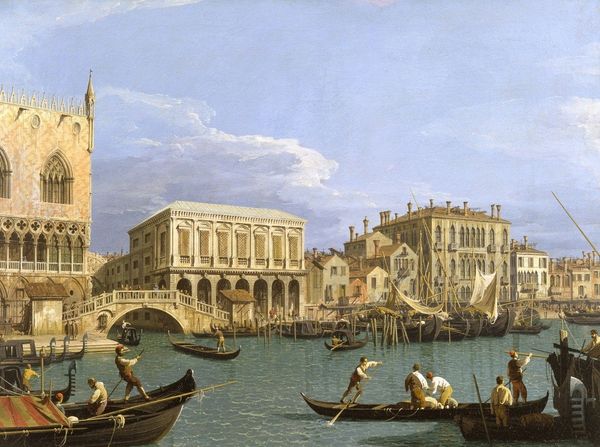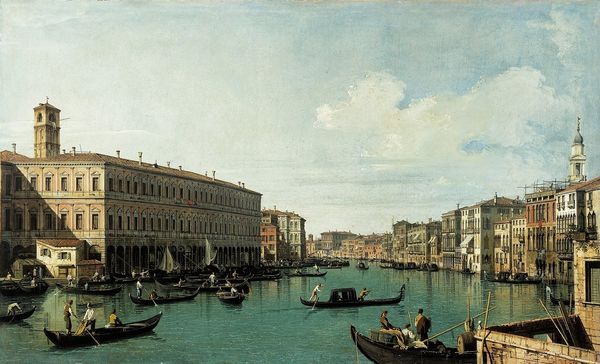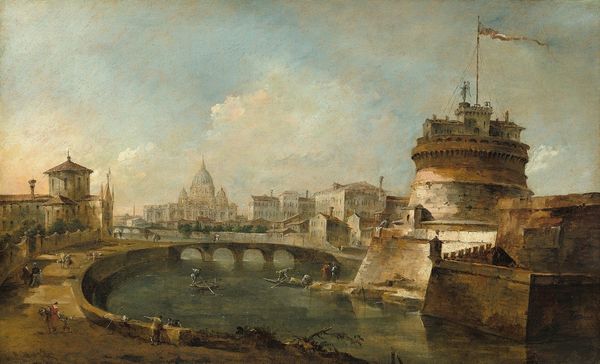
Dimensions: support: 1295 x 1041 mm
Copyright: CC-BY-NC-ND 4.0 DEED, Photo: Tate
Editor: So, William Marlow's "Capriccio: St Paul’s and a Venetian Canal" is quite the architectural fantasy. It's disorienting seeing London's cathedral transported to Venice. What's your take on this imagined space? Curator: Marlow’s capriccio reveals the power dynamics embedded in cultural appropriation. Venice, often romanticized, is here a stage for British ambition, St. Paul's symbolizing colonial power projected onto a foreign landscape. How does this juxtaposition make you feel? Editor: It feels…assertive, almost like a claim. As if London is saying, "We can be here, too." Curator: Precisely. Marlow isn't just painting pretty buildings; he's visualizing a complex relationship between identity, place, and dominance. Considering this, does the painting’s beauty still hold the same appeal? Editor: It makes me think about the stories we tell through art, and who gets to tell them. Thanks for making me think about this piece differently. Curator: My pleasure. Art always reflects power; our job is to decipher its language.
Comments
tate 6 months ago
⋮
http://www.tate.org.uk/art/artworks/marlow-capriccio-st-pauls-and-a-venetian-canal-n06213
Join the conversation
Join millions of artists and users on Artera today and experience the ultimate creative platform.
tate 6 months ago
⋮
This is an architectural fantasy ('capriccio'), combining the most instantly recognisable element of the London skyline - St Paul's - with a Venetian canal. The artist, who specialised in city views, may be drawing attention to parallels between Renaissance Venice and modern London. Both cities were made wealthy through international commerce, so Marlow's picture could be interpreted as a fantasy of the ultimate imperial city. Gallery label, October 2002
